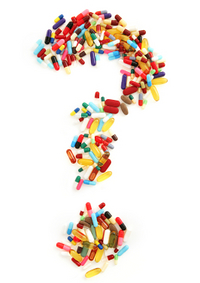Ever Heard of a Decoction?
Does it conjure up images of a witches brew?
Decoction literally means to concentrate the essence of a substance by heating or boiling, especially a medicinal preparation made from a plant.
This is exactly the method of preparation Traditional Chinese Medicine (TCM) uses to extract or release the chemicals stored in botanicals used for medicinal purposes.
In fact, this was the way I was first introduced to Chinese herbal medicine. I visited a Licensed Acupuncturist/Doctor of Oriental Medicine whom I was referred to me by my OB/GYN. Yes, I was extremely fortunate to have an alternative minded OB/GYN who understood just enough about herbs to refer me to a professional. I was 9 1/2 months pregnant. (A small exaggeration, but this is how I felt.) The baby was overdue and there were no signs of labor. I wanted a natural, gentle way to encourage my body into labor. Rather than experimenting with a bottle of capsules my doctor insisted I see a Licensed Acupuncturist/Herbalist for a safe herbal prescription.
After a lengthy visit with the Chinese Medicine doctor, I had my bag of roots, barks and berries boiling in my kitchen. I cooked them as instructed. The correct word is actually, “DECOCTED”. This is generally boiling them at the appropriate temperature, for a certain amount of time, with a set amount of purified water. I drank them for three days and on the third day I went into labor. Ok, the baby was due anyway but this was my introduction into Chinese herbal medicine. It’s been over 20 years since I decocted my first Chinese herbs.
Herbal decoction methods have been used throughout the ages. Before the industrialized revolution built factories to produce herbal medicine into capsules and pills, people boiled herbs. Today we still have many traditional cultures which use herbal medicine the “old fashioned way”. Boiling a pot of roots, bark and berries and then drinking the water left behind is the foundation of Traditional Chinese Medicine.
The question remains, is drinking a pot of herbal medicine a better, faster, more effective way to use herbs than swallowing a handful of pills?
The answer is without a doubt YES! The average size of pills and capsules are very small and can hold only about 1/2 a gram of herbal extract.
Even if the herbal extract is at a very high concentration, 1/2 gram per capsule (about 1/4 tsp) is a very small amount to get a desired effect from the herbal medicinal. Most encapsulated bottled products recommend taking 2-3 capsules once or twice daily. This equals an extremely small dose of raw herbs or decocted herbs. Practically speaking pills and capsules are fairly easy to take, that is, until you have to take 20 or so pills a day.
Drinking your herbal medicine not only allows the chemical components from the plants to be more readily bio-available, it is also the way your body understands receiving nourishment. Research has been conducted on the dissolution of herbs in our body. Dissolving herb granules in hot water or decocting them allows the solvents to release their effect immediately thereby working more quickly in the body. Whereas, herbal medicine combined with fillers such as dextrin in capsules or pills, (also used to prevent clumping), need very hot, near boiling water to dissolve. This high dissolution temperature of dextrin inhibits the fast absorption.
With so much information available on the use of decoctions, it’s hard for me to choose a pill or capsule over granule medicinal herbal extracts. Besides, who would want all those fillers in capsules and tablets anyway?

 As I make my way through the murky waters of the internet today, I found the most refreshing words, like a crystal clear lake in the middle of the mountains that you just happen upon on a back country hike. The words were these: “Directions to Standard Process” Now I don’t usually name any companies in my blogs or support and certain supplier and I truthfully have no connection with Standard Process (a supplement manufacturer), but that’s not the reason to mention them here. The reason is simple. Wadding through all the supplement/herb suppliers on the internet I’ve never seen these words before. Directions, they are advertising directions to their factory on a map of Wisconsin and even more incredible, a tour of their factory. It’s unheard of!
As I make my way through the murky waters of the internet today, I found the most refreshing words, like a crystal clear lake in the middle of the mountains that you just happen upon on a back country hike. The words were these: “Directions to Standard Process” Now I don’t usually name any companies in my blogs or support and certain supplier and I truthfully have no connection with Standard Process (a supplement manufacturer), but that’s not the reason to mention them here. The reason is simple. Wadding through all the supplement/herb suppliers on the internet I’ve never seen these words before. Directions, they are advertising directions to their factory on a map of Wisconsin and even more incredible, a tour of their factory. It’s unheard of! Labels on most herbal products in the US provide little to no information regarding the amount of fillers ie. starch, otherwise known as excipients. Excipients are inactive substance used as a carrier or any ingredient that is added to adjust the intended dosage. Often excipients are used to achieve a uniform 5 to 1 herb ratio. (Basically a diluents). Excipients are also used to improve administration such as making capsules or pressed pills.
Labels on most herbal products in the US provide little to no information regarding the amount of fillers ie. starch, otherwise known as excipients. Excipients are inactive substance used as a carrier or any ingredient that is added to adjust the intended dosage. Often excipients are used to achieve a uniform 5 to 1 herb ratio. (Basically a diluents). Excipients are also used to improve administration such as making capsules or pressed pills.